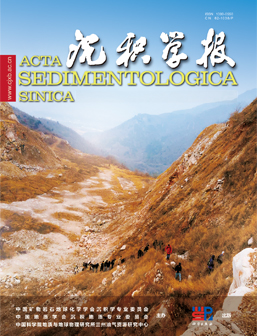Architecture patterns and characterization of marine sandy beach-bar reservoirs- Taking the Donghe Sandstone in Hudson Oilfield as an Example
doi: 10.14027/j.issn.1000-0550.2024.053
- Received Date: 2023-12-05
- Available Online: 2024-05-14
-
Key words:
- Sediment architecture /
- Marine beach-bar /
- Reservoir characterization /
- Donghe sandstone /
- Tarim basin
Abstract: [Significance] The architecture of marine sandy beach-bar reservoirs is complex, and dominant seepage channels and barriers are developed inside the reservoirs. There is a lack of architecture models for underground reservoirs, which cannot effectively guide the recovery of remaining oil. [Method] In this paper, we have proposed the architecture pattern of marine sandy beach-bar reservoirs by outcrops, satellite photos and numerical simulation with the Hudson Donghe sandstone as the research objective. Under the guidance of the mode, the architecture of the Donghe sandstone reservoir is finely characterized. [Result] The results show that: the depositional architecture of a single sand bar inside composite beach-bar is controlled by many factors such as shoreline shape, coastal slope, wave direction, and height, multiple types of sandbars can be formed, such as conical bar, tight moon bar, positive linear bar, nonlinear inclined bar, and sandy beak bar. Based on the identification of single sandbar boundaries and guided by the architecture mode, 13 sandbars of different sizes were identified in the C1 layer of the study area, including five tight moon bar, seven forward linear bars and one oblique bar, there are differences in quantitative scale between different sanbars. The length of tight moon bar is about 1.5-3 km, the length of the oblique bar is about 4.5-5 km, and the length of the positive linear bar is more than 6 km. The sandbars exhibits both progradational and retrogradational stacking patterns, while the bars in C1 small layer exhibits progradational lateral separation and progradational lateral stacking patterns. The migration rate of the coastline affects the stacking relationship between the sandbars. The numerical simulation results and outcrop data indicate that there are differences in the development patterns of the internal accretion bodies. The distribution patterns of the internal interlayers include top accretion, top accretion-side accretion, and interval type. In the C1 small layer, three types of distribution patterns of the internal interlayers were identified. The internal interlayers in the No. 16 sandbar exhibit a two-stage distribution feature of "top accretion-side accretion", while the internal interlayers in the No. 19 sandbar exhibit a "side accretion". The angle distribution range of the top and side accretion interlayers is about 1-3 ° and 3-7 °, and the interlayers between dam No. 14 and 15 sandbars are distributed in an "interval" pattern. The development pattern of the interlayers inside the bars of Hudson Donghe sandstone reservoir is summarized. [Conclusion] Fine characterization of the internal architecture of marine sandy beach-bar reservoirs can effectively guide the recovery of remaining oil.
| Citation: | Architecture patterns and characterization of marine sandy beach-bar reservoirs- Taking the Donghe Sandstone in Hudson Oilfield as an Example[J]. Acta Sedimentologica Sinica. doi: 10.14027/j.issn.1000-0550.2024.053 |






 DownLoad:
DownLoad: